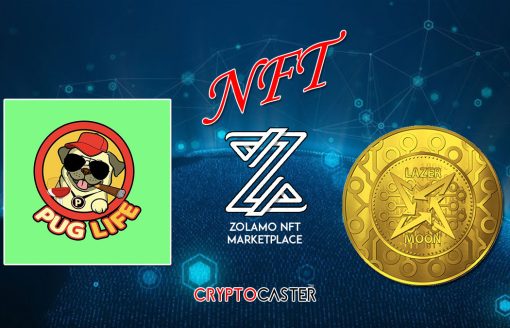Any cryptocurrency blockchain network’s throughput, or processing speed, can be increased via Layer 1 and Layer 2 blockchain scaling solutions. To assist process more transactions, they can contain extra network solutions or protocol changes.
Stay in the know on crypto by frequently visiting Crypto News Today
Updates that fall under Layer 1 include dividing the database into several sections (a process called sharding) and altering the consensus mechanism or block size. Layer 2 consists of rollups, which bundle transactions, side chains, which are rival blockchains, and state channels, which handle transactions off-chain.
Key Points
- Layer 1 and Layer 2 crypto blockchain scaling solutions help increase the overall throughput—another name for processing speed—of a blockchain network.
- Layer 1 scaling includes updates to the block size, consensus mechanism, or database partition.
- Layer 2 scaling includes bundling transactions, processing in parallel, or handling transactions off chain.
- Layer 1 and Layer 2 scaling may compromise the security of a blockchain.
The Significance of Layer 1 and Layer 2 Scaling Solutions
A blockchain is a decentralized network of nodes that independently processes cryptocurrency transactions and uses a set of common guidelines or a consensus-building process to ensure that the transactions are accurate. Following that, the transactions are entered into a chain of unchangeable data blocks that are recorded in consecutive sequence.
Regretfully, as a blockchain gains popularity—Bitcoin is one example—more processing power is required to manage the increasing volume of transactions on the network. Blockchain protocols for cryptocurrencies may also place a cap on the total number of transactions that may be handled, which would clog the network.
CryptoCaster Quick Check:
Popular blockchain networks have become extremely slow as a result, occasionally processing transactions in as long as ten minutes or longer. Scaling activities have been created to help provide a more effective way to hold a much higher amount of transactions in order to address this problem.
Every network can be scaled in a few different ways, and numerous scaling solutions have been created for well-known blockchains. These solutions either assist in shifting the load of transaction processing to other networks or enhance the base-layer network by updating its code.
Quick Fact: Blockchain networks will eventually depend on scalability solutions like Layer 1 and Layer 2 to deliver reliable and effective transaction handling due to sustained growth in network demand.
Layer 1 Blockchains vs. Layer 2 Blockchains
The foundational design of a decentralized cryptocurrency network is a Layer 1 blockchain. Blockchains with Layer 1 include Cardano, Ethereum, and Bitcoin. These blockchains use a shared consensus mechanism, like proof of work (PoW) or proof of stake (PoS), to manage the processing and security of a cryptocurrency network.
Network protocols built on top of a Layer 1 solution are referred to as Layer 2 blockchains. Although Layer 2 protocols are more adaptable in terms of scaling transaction processing and network throughput overall, they still rely on the Layer 1 blockchain for network and security architecture. Examples are the Lightning Network in Bitcoin and Polygon, which is a layer on top of Ethereum.
In August 2023, Coinbase debuted Base, an Ethereum Layer 2 network.
Blockchain Scaling Solutions Types for Layer 1
Various methods exist for scaling Layer 1 blockchains, such as:
A larger block size
The capacity of the network has increased as a result of code updates made by some Layer 1 cryptocurrency blockchains to increase the block size. This increase allows more transactions to be confirmed at once. The Bitcoin Cash (BCH) network is an illustration of this; it increased its block size from 1 MB to 8 MB and eventually to 32 MBs, enabling it to execute over 100 transactions per second as opposed to Bitcoin’s seven transactions per second.
Updated Consensus Mechanism
A blockchain’s consensus mechanism is how it verifies transactions to guarantee the network’s security and correctness. For instance, the proof-of-work (PoW) consensus method used by Bitcoin necessitates a massive amount of computing power to solve a challenging equation before the next block can be added to the blockchain.
PoW was also the consensus method employed by Ethereum at first, but it has since been replaced by a proof-of-stake (PoS) system that requires node operators to lock up a sizable amount of Ether (ETH) in order to be permitted to execute transactions.
💡 PoS employs a lottery approach to distribute block recording to stakers and boosts the blockchain’s processing capacity in exchange, eliminating the need for processing power to mine the next block in a cryptocurrency blockchain.
Sharding
Comparable to database partitioning, sharding enables the division of a blockchain database into smaller sections for the purpose of processing transactions concurrently. This boosts a Layer 1 blockchain network’s overall capacity.
Different Blockchain Layer 2 Scaling Solutions Types
Additionally, there are other kinds of Layer 2 blockchain scaling solutions, such as:
Rollups
The number of transactions that may be completed at once can be greatly increased by processing bundles of transactions “rolled up” into a single transaction as opposed to processing each transaction separately. The transactions are contracted out to be aggregated, recorded off-chain, and then processed as a single unit on the main chain.
Side Chains
In order to process transactions in parallel, side chains—independent blockchain networks with their own set of validators—are used. This significantly boosts a blockchain’s capacity to handle transactions, but you still have to have faith in the side chain network’s and the bridge network’s integrity.
State Channels
State channels and side chains are comparable in that both involve off-chain transactions that are recorded in bulk before the channel’s state is scheduled to finish. After then, a finished “state” is broadcast to the main blockchain network, allowing the transactions to be recorded in bulk there. 💡This is how Bitcoin’s Lightning Network is set up.
Hazards Associated with Scaling Solutions for Layer 1 and Layer 2 Blockchains
Although employing a scaling solution can greatly enhance transaction processing and boost adoption overall, there are several dangers involved:
- Blockchain forks: A blockchain is a collection of linked data blocks that contains a chronological record of every transaction. A fork in the blockchain might be necessary to update it to scale, which might stoke conflict among blockchain proponents. The scaling update can occur by forking the code, however doing so results in two networks operating at the same time (such as Bitcoin and Bitcoin Cash). This may cause user confusion and lower the value of cryptocurrencies as a whole.
- More difficult to verify: Some scaling solutions transfer transactions to an off-chain network, making public verification impossible. Due to this lack of transparency, malicious actors that seek to alter transaction data may be exposed on a blockchain.
Scalability in Crypto: What Is It?
The blockchain is a decentralized network that powers cryptocurrencies. This type of network has some drawbacks, such as the inability to expand its capacity without requiring new programming or other fixes. A cryptocurrency’s scalability is determined by its capacity to update the network or by Layer 2 technologies that facilitate faster transaction processing.
What Distinguishes Layer 2 Scaling from Layer 1 Scaling?
Modifications to the core protocol of the blockchain network that increase scalability are known as layer 1 scaling solutions. Instead, off-chain services or networks are used by Layer 2 scaling solutions to improve scalability.
After Layer 1 and Layer 2 Scaling, What Happens Next?
Major crypto blockchain networks’ efforts to increase their scalability will take time. The exchange that goes by the name Binance runs a crypto literacy platform called Binance Academy. It states that “the most likely option is for Layer 1s to focus on security, and allow Layer 2 networks to tailor their services to specific use cases.”
Because they have sizable user and developer communities, big networks like Ethereum are likely to remain dominant for the foreseeable future. However, building tailored Layer 2 solutions is made easier with a wide, decentralized set of validators and a reliable reputation.
The Final Word
The general uptake and expanded capacity of a cryptocurrency network depend on the scaling of a blockchain network. In addition to increasing the capacity to handle considerably more transactions, both Layer 1 and Layer 2 scaling solutions aid in maintaining the integrity of the underlying blockchain. However, there are built-in dangers that could jeopardize a specific blockchain’s security or even the project’s integrity as a whole.![]()
We hope you appreciated this article. Before you move on, I was hoping you would consider taking the step of supporting CryptoCaster’s journalism.
From Elon Musk, Larry Fink(BlackRock) to Jamie Dimon(JP Morgan Chase) a number of billionaire owners have a powerful hold on so much of the hidden agendas’ which eludes the public concerning the paradigm shift juxtaposed by cryptocurrency and web3 emerging technologies. CryptoCaster is different. We have no billionaire owner or shareholders to consider. Our journalistic efforts are produced to serve the public interest in crypto development and institutional disruptions – not profit motives.
And we avoid the trap that befalls much U.S. and global media – the tendency, born of a desire to please all sides, to engage in false equivalence in the name of neutrality and retail consumer protection. While fairness and transparency dictates everything we do, we know there is a right and a wrong position in the fight against fiat global banking interest and monetary reconstruction precipitated by the emerging crypto ecology.
When we report on issues like the FTX, Binance and Ripple crisis, we’re not afraid to name who or what is uncovered. And as a crypto sentinel, we’re able to provide a fresh, outsider perspective on the global monetary disruption – one so often missing from the insular American and European media bubble.
Around the world, readers can access the CryptoCaster’s paywall-free journalism because of our unique reader-supported model. That’s because of people like you. Our readers keep us independent, beholden to no outside influence and accessible to everyone – whether they can afford to pay for news and information, or not.
We thankyou for the on-going support our readers have bestowed monetarily. If you have not considered supporting CryptoCaster, if you can, please consider supporting us just once from $1 or more of Bitcoin (satoshi) or Eth, and better yet, support us every month with a little more. Scroll further down this page to obtain CryptoCaster’s wallet addresses.
Thank you.
Kristin Steinbeck
Editor, CryptoCaster
Please Read Essential Disclaimer Information Here.
© 2024 Crypto Caster provides information. CryptoCaster.world does not provide investment advice. Do your research before taking a market position on the purchase of cryptocurrency and other asset classes. Past performance of any asset is not indicative of future results. All rights reserved.
Contribute to CryptoCaster℠ Via Metamask or favorite wallet. Send Coin/Token to Addresses Provided Below.
Thank you!
BTC – bc1qgdnd752esyl4jv6nhz3ypuzwa6wav9wuzaeg9g
ETH – 0x7D8D76E60bFF59c5295Aa1b39D651f6735D6413D
MATIC – 0x7D8D76E60bFF59c5295Aa1b39D651f6735D6413D
LITECOIN – ltc1qxsgp5fykl0007hnwgl93zr9vngwd2jxwlddvqt
CRYPTOCASTER HEATMAP





